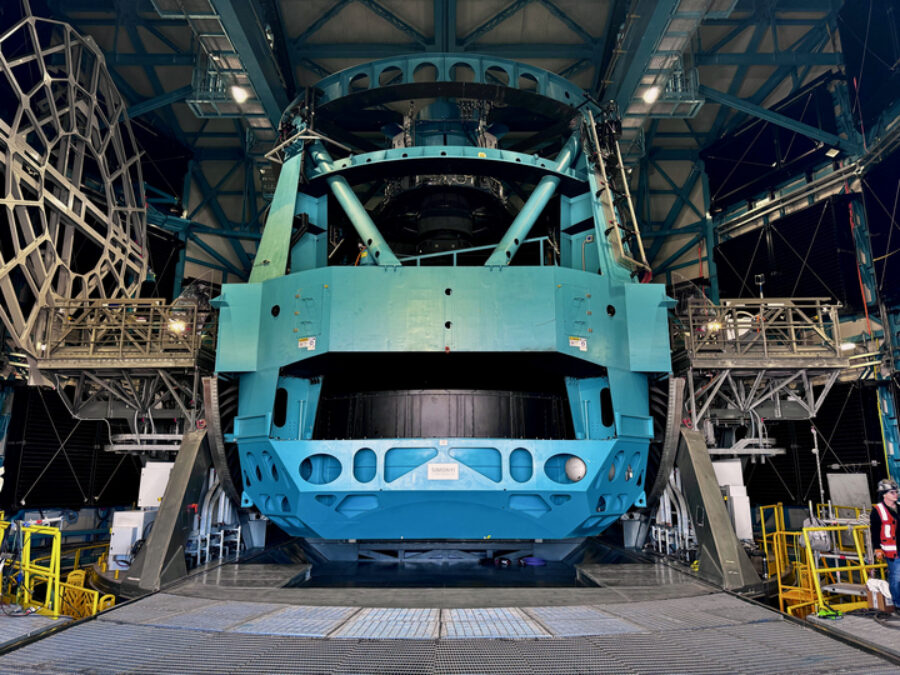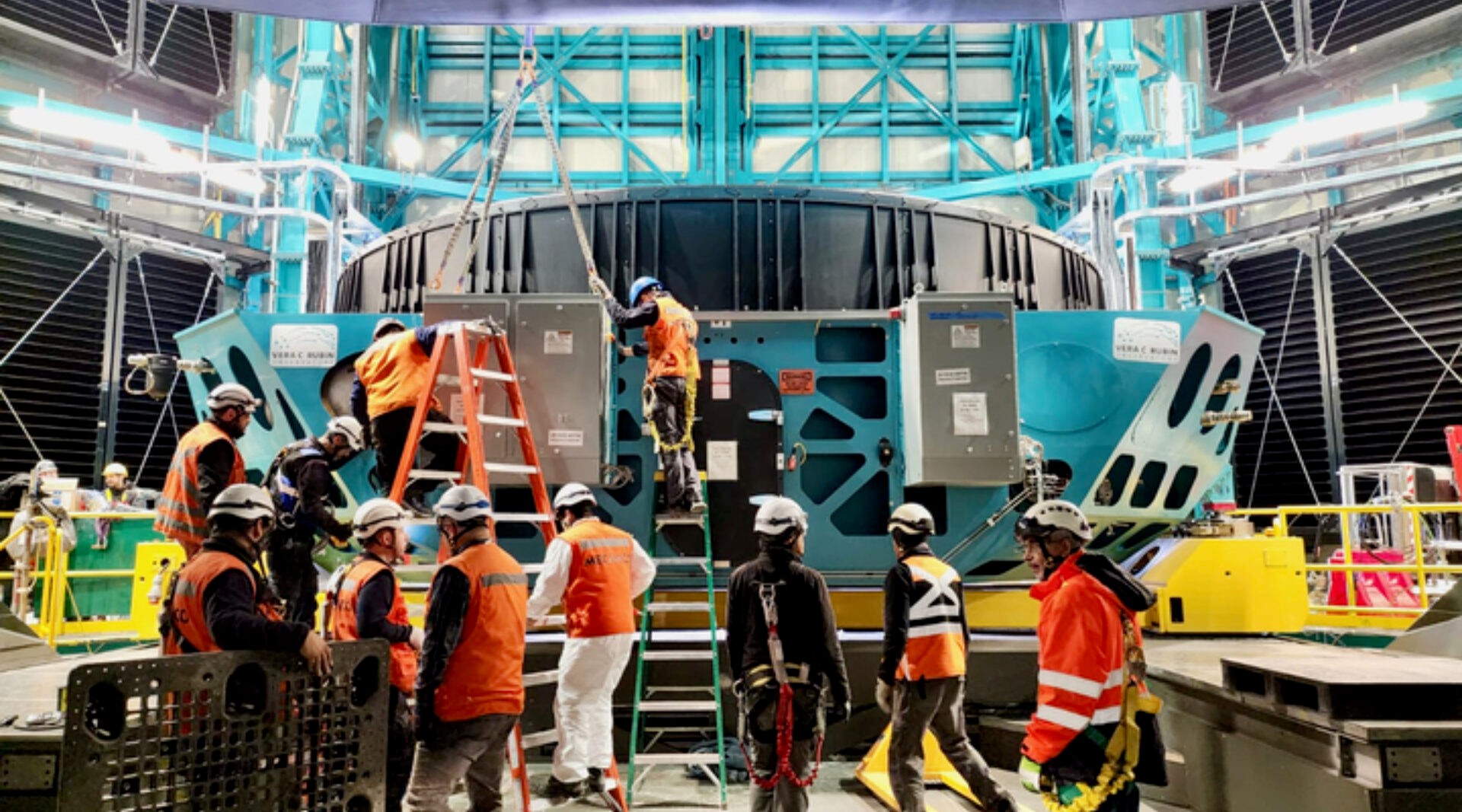Rubin Team Installs Primary Mirror
In early October, the team on Cerro Pachón installed Rubin Observatory's 8.4-meter combined primary/tertiary mirror (M1M3) on the Simonyi Survey Telescope for the first time. This is a huge achievement in itself, and — with all three mirrors and the commissioning camera (ComCam) now in place — Rubin Observatory officially has a complete telescope! After getting this configuration of the telescope on-sky and conducting several months of testing, the summit team will remove the 144-megapixel ComCam and install the final science component: the car-sized, 3200 megapixel LSST Camera.
Getting the M1M3 on the telescope involved months of intensive work and contributions from many members of the Rubin team as well as contracted workers on the summit. As always, safety was the top priority in all activities to protect personnel and to prevent damage to the delicate glass mirror. Prior to the installation (and after being coated with protected silver in April), the mirror was integrated with its steel support structure, the M1M3 cell. After connecting all the mirror support actuators and the essential utilities and testing the mirror cell assembly, the team outfitted the mirror with light baffles to block stray light from each of its two differently-curved surfaces. After giving the mirror a final cleaning with CO2, the team used the custom-built M1M3 transport cart and rail system to move the mirror cell assembly into the vertical platform lift, which took it from the maintenance hall on the 3rd level of the observatory to the 8th level telescope floor. The combined weight of the mirror, cell, and transport cart is about 67,000 kg (~74 tons)! Another set of rails helped the team drive the mirror cart from the lift to its place under the hulking telescope mount. Over the next two days the team inserted and torqued 196 bolts — a combination of 136 imperial and 60 metric bolts across multiple surfaces and connection points — to securely attach the mirror and cell on the telescope. Then they moved the transport cart away and back to level 3, leaving the beautiful, complete telescope you can see in the photo below.


